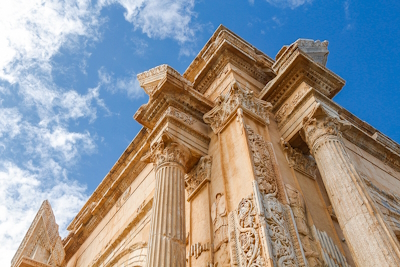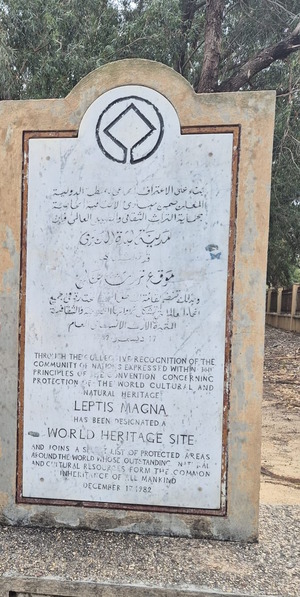Leptis Magna

The Archaeological Site of Leptis Magna comprises the remains of the Phoenician port Lpgy, which was integrated into the Roman Empire in 46 BCE.
When Septimus Severus, who was born here, became Roman emperor in 193 CE, he remodeled the urban plan of Leptis Magna. He added major monuments in a style influenced by African and Eastern traditions. It subsequentially became one of the most beautiful cities of the Roman world. Its Antique port is a fine example of Roman technology.
Community Perspective: Among the best of all “Roman ruins”, especially for its state of completeness.
Map of Leptis Magna
Community Reviews
Tony O Connor
I was at leptis many times and have lots of pictures to share, was there in the early eighties when working in Misrata,I have seen many Roman cities but this is undoubtably the best, this gem is a must see for enthusiasts. (If you get the chance to enter Libya?)
Tony
Solivagant

What did the Romans ever do for us? Well, there are some beautifully preserved Public Toilets at Leptis Magna (see photo) which show a degree of civilisation unmatched in many places around the world today!
Letpis Magna also has its fair share of triumphal arches, temples, baths, theatres, mosaics etc but it is perhaps the “ordinary” things of life which bring home most what life was like and the continuity until today.
Apart from Pompeii I do not know of any ruined roman city which is as “complete” as Leptis Magna. You are going to get your fill of “Roman ruins” in Libya – The others each have their “gems” but Leptis as a whole is unmatched and should not be missed.
Site Info
- Full Name
- Archaeological Site of Leptis Magna
- Unesco ID
- 183
- Country
- Libya
- Inscribed
-
1982 - In Danger
- Type
- Cultural
- Criteria
-
1 2 3
- Categories
- Archaeological site - Ancient Rome
- Link
- By ID
Site History
2016 In Danger
Simultaneously with the four other World Heritage sites of Libya "because of damage caused by the conflict affecting the country and the threat of further damage it poses".
1982 Inscribed
Site Links
Unesco Website
Official Website
Related
In the News
Connections
The site has 19 connections
Art and Architecture
Constructions
Geography
History
Human Activity
Religion and Belief
Science and Technology
Timeline
World Heritage Process
Visitors
49 Community Members have visited.
The Plaque
 (photo by EvaK)
(photo by EvaK)